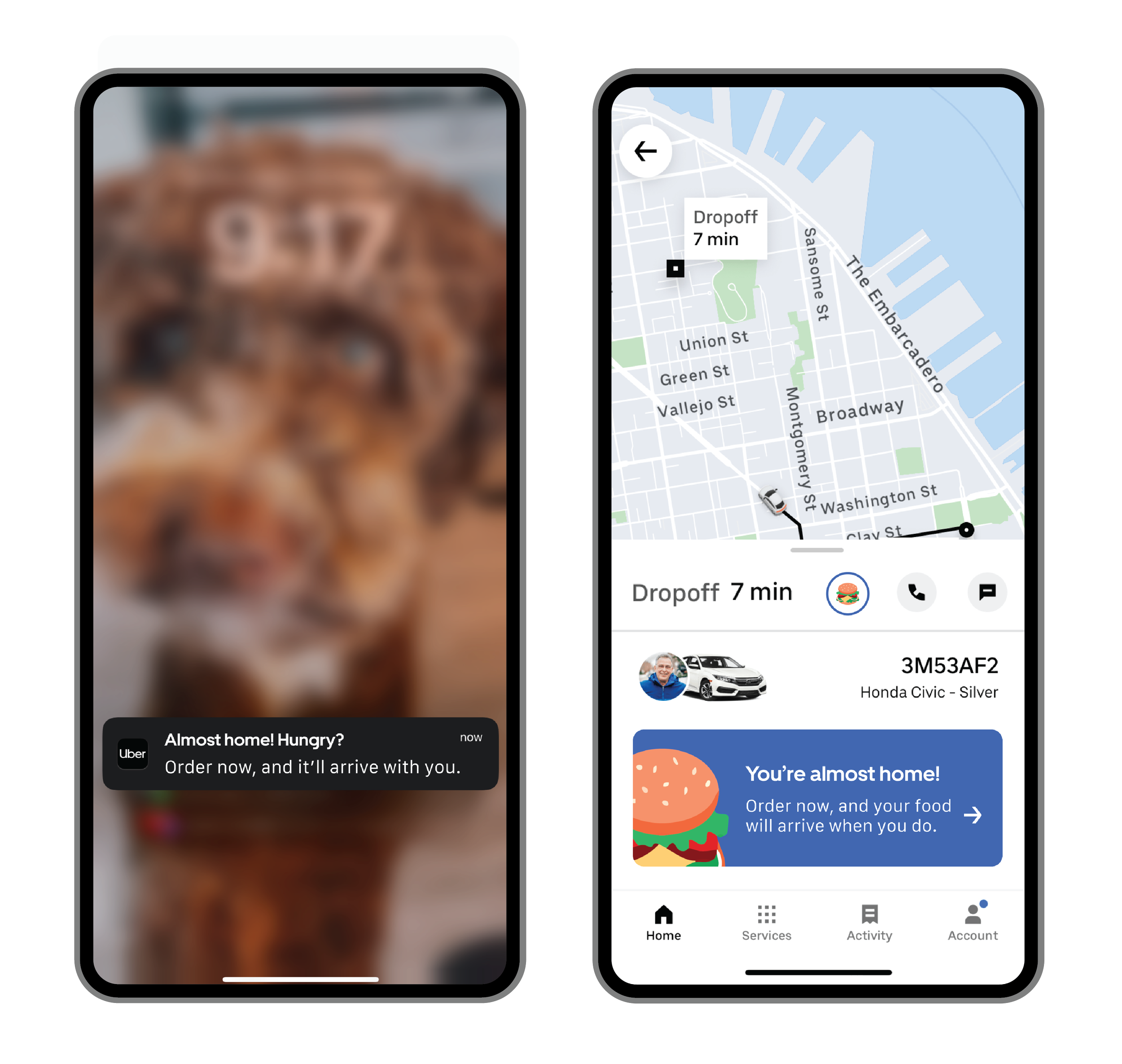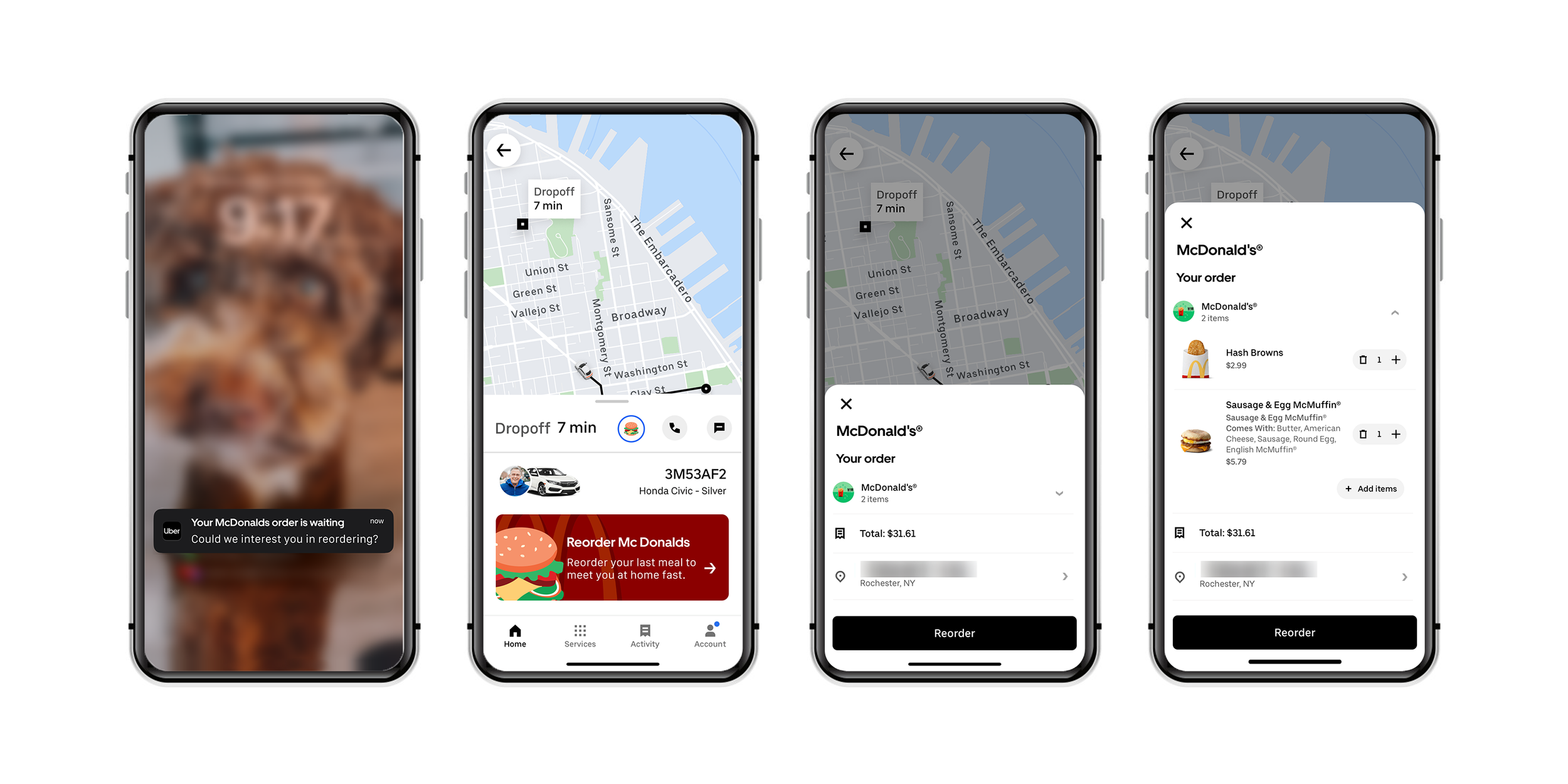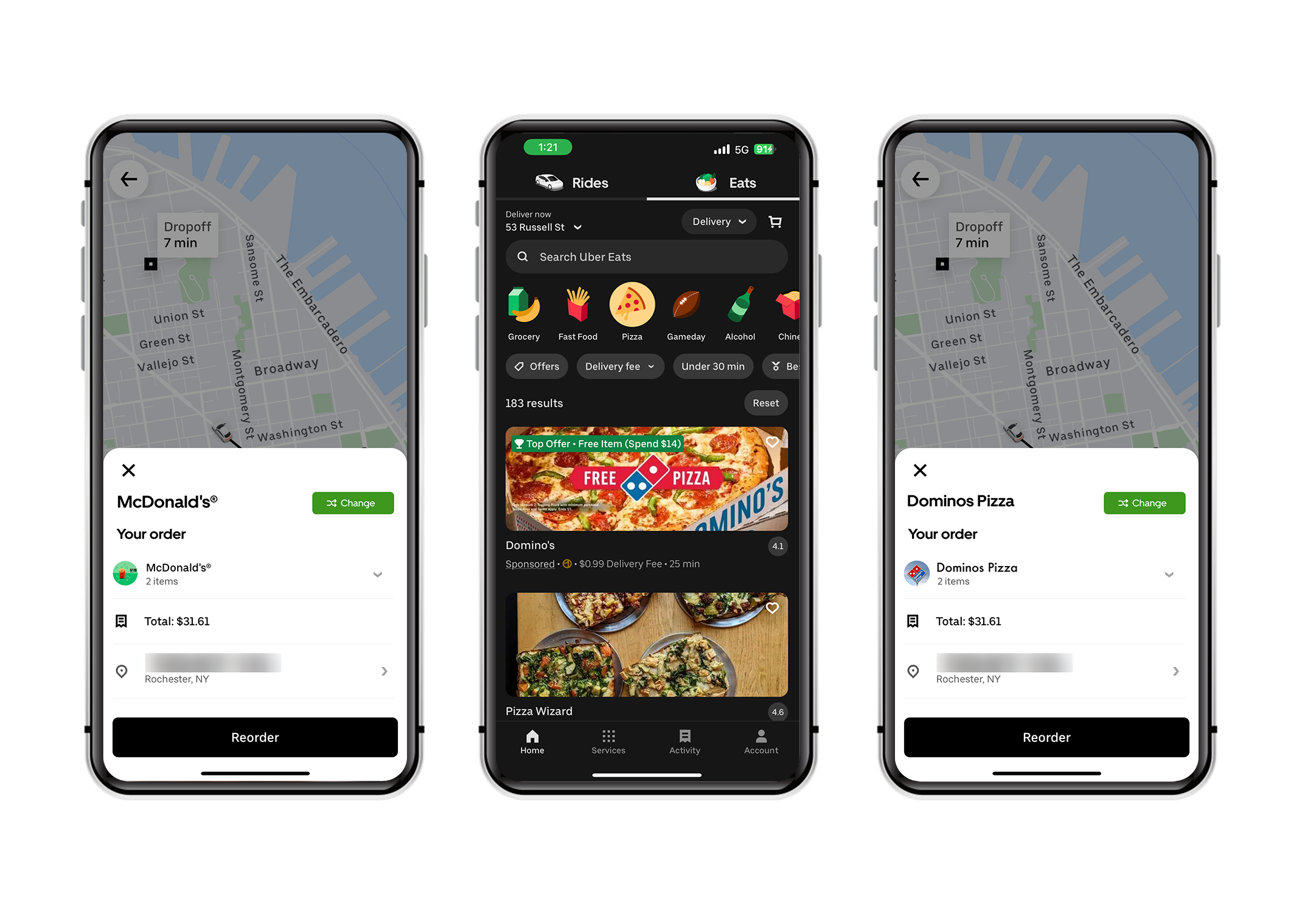Problem statement
In the Uber app, promotions and integrations occur before the ride, which limits the ability to create a seamless and fully integrated experience across its services, such as Uber Eats, Uber Rent, and others. To enhance the user experience and foster a more cohesive ecosystem, how can we deepen the integration of these services within the app? By embedding these features throughout the user journey, we could provide a more unified experience that feels intuitive and connected, ultimately increasing usability and user satisfaction.
discovery
While significant integration has already been achieved through UX/UI initiatives, leveraging prescriptive AI could be the key to optimizing the user experience even further. By using AI to learn rider preferences in real time, we can implement a cross-promotion strategy that delivers personalized suggestions at the right moments during the ride. The app screens below highlight potential touchpoints where we can strategically intervene to create a more seamless and relevant experience for users.
phase 1 ai
While there are several potential touchpoints, it's important to consider that riders typically spend less than a minute to book their ride. With rides averaging 5-7 minutes, this presents an opportunity to engage users with relevant offers during the journey. By leveraging AI to analyze contextual data—such as the rider's location (near a bar or club) and their destination (home)—we can deliver personalized recommendations. For example, if Susie orders a ride at 3 AM and the system detects she’s near a nightlife area and heading home, we could seamlessly suggest an Uber Eats order. After a night out, it’s a natural moment for a late-night snack, making this a highly relevant and context-driven touchpoint.
phase 2
If the rider proceeds with an order, Prescriptive AI can enhance the experience by personalizing it further—delivering tailored suggestions, visuals, and copy that recreate their previous interactions. For example, if Susie ordered two specific items from McDonald's through Uber Eats, AI could streamline the reordering process, enabling her to quickly reorder with fewer steps. This approach not only reduces friction but also provides a more intuitive, seamless experience that feels personalized to her preferences.
protoype
AI LOGIC
With the core UX established, integrating robust AI logic is the next critical step. It's essential to design mechanisms that allow users to correct or redirect AI outputs, ensuring transparency and adaptability. Since AI relies on iterative data refinement rather than absolute certainty, we’ve empowered users to manually adjust their order when necessary. This approach not only improves immediate user satisfaction but also generates valuable feedback data to refine our AI models. For phase two, we envision offering users tailored options—such as selecting from 2 to 4 past orders—further enhancing the AI's predictive accuracy and creating a more intuitive and precise experience.
further integration
By applying prescriptive AI logic, we can enable our machine models to anticipate rider needs based on patterns and context. For instance, if a rider is headed to the airport, the AI could proactively suggest a car rental through Uber Rent for their destination. As riders repeat certain behaviors, AI can learn which cities or specific users are more likely to make similar purchases, such as a car rental. For example, with Uber Teen, AI could recognize that students often pair up for school projects and might need supplies, opening up an opportunity for Uber Retail to step in. This type of integration would allow for a seamless, personalized experience across the entire Uber ecosystem, creating a truly connected and efficient user journey.





